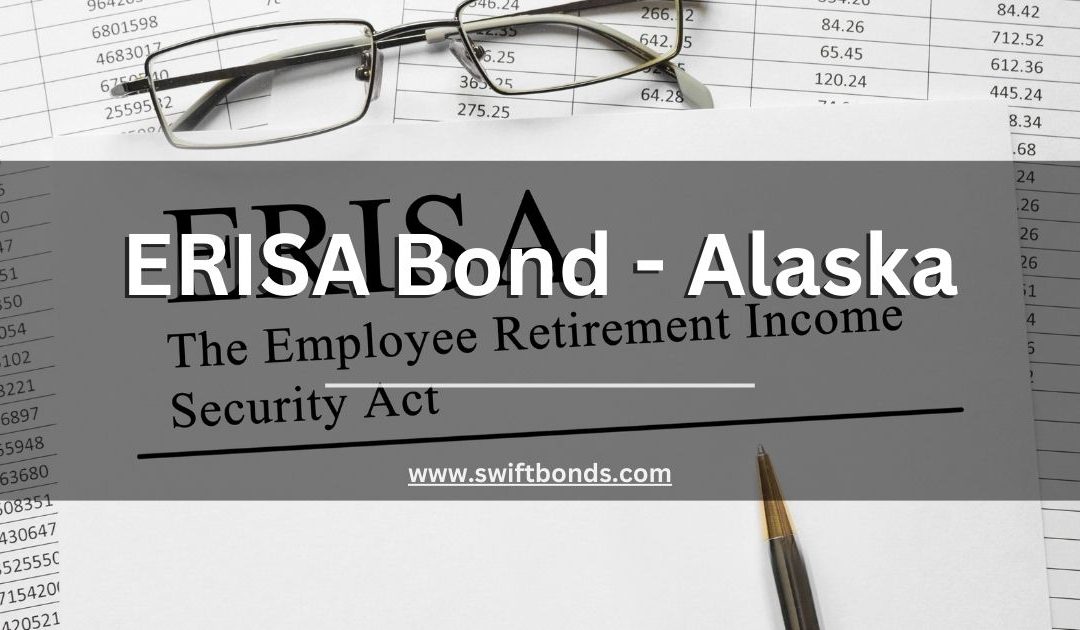Introduction
Business owners and plan administrators in Alaska who manage employee benefit plans carry significant responsibilities. The ERISA Bond - Alaska protects those benefits by ensuring compliance with the Employee Retirement Income Security Act (ERISA), a federal law that safeguards employee retirement and welfare plans.
Just like the Alaska - Mortgage Broker/Lender ($75,000) - NMLS Bond provides financial security in the lending industry, an ERISA bond shields employees and beneficiaries from fraud and mismanagement. Every fiduciary handling plan assets must secure this bond to meet Department of Labor (DOL) requirements.
Misunderstandings About ERISA Bonds
Some assume that an ERISA bond functions as insurance for the employer. In reality, this bond protects the employees who depend on benefit plans, not the employer or plan administrator.
Another misconception is that all businesses need the same bond amount. ERISA requires a bond covering at least 10% of plan assets, with a minimum of $1,000 and a maximum of $500,000 (or $1 million for plans with company stock). For example, a plan holding $500,000 in assets requires at least a $50,000 bond, while a $2 million plan needs a $200,000 bond.
Like the IBEW Local No. 1547 - Electrical Funds / Fringe Benefits ($50,000) Bond, an ERISA bond ensures that employees receive the financial benefits promised by their employer.

How to Secure an ERISA Bond in Alaska
A simple process ensures compliance with ERISA:
- Determine the Required Bond Amount – Calculate 10% of plan assets to find the bond limit.
- Complete an Application – Provide company details, plan information, and financial records.
- Receive a Quote – The cost depends on coverage limits and business creditworthiness.
- Purchase the Bond – Once issued, the bond remains valid for one year and must be renewed annually.
- File with the Department of Labor – Compliance requires maintaining a valid bond throughout plan management.
By following these steps, businesses meet ERISA’s bonding requirements while protecting employee retirement funds.

The Risks of Not Having an ERISA Bond
Failure to secure this bond leads to serious consequences:
- Regulatory Penalties – The Department of Labor enforces strict compliance, and violations result in financial penalties.
- Increased Legal Exposure – Plan administrators without a bond face liability lawsuits from employees and beneficiaries.
- Loss of Employee Trust – Employees rely on benefit plans for retirement and healthcare, and lack of compliance damages employer credibility.
Similar to the Alaska - Mortgage Broker/Lender ($75,000) - NMLS Bond, which prevents consumer losses in the mortgage industry, an ERISA bond safeguards employee benefits from mismanagement or fraud.

The Advantages of Securing an ERISA Bond
Beyond compliance, an ERISA bond provides:
- Regulatory Approval – Businesses meet Department of Labor standards, avoiding legal issues.
- Financial Protection – Employees receive the retirement and healthcare benefits they expect.
- Business Credibility – A bonded company builds trust with employees and regulatory agencies.
This bond strengthens employer accountability while ensuring financial security for employee benefits.

Conclusion
Employers managing retirement and healthcare plans need an ERISA bond to remain compliant and safeguard employee interests. The ERISA Bond - Alaska prevents fraud, protects employee savings, and builds trust between businesses and their workforce.
For those seeking fast approvals and affordable rates, Swiftbonds simplifies the process, allowing businesses to focus on growing while staying compliant with federal regulations.
Frequently Asked Questions
Who Needs an ERISA Bond?
Any business or plan administrator handling employee benefit plan assets must secure an ERISA bond.
How Much Coverage Is Required?
The bond must cover at least 10% of total plan assets, with a minimum of $1,000 and a maximum of $500,000 (or $1 million if company stock is involved).
What Does the ERISA Bond Cover?
It protects employees from fraud, theft, or mismanagement of plan funds by fiduciaries.
Is an ERISA Bond the Same as Insurance?
No, insurance protects the employer, while a bond protects employees and beneficiaries.
How Long Does It Take to Get Bonded?
Most approvals occur within 24 hours, and Swiftbonds provides fast processing for businesses needing compliance.


